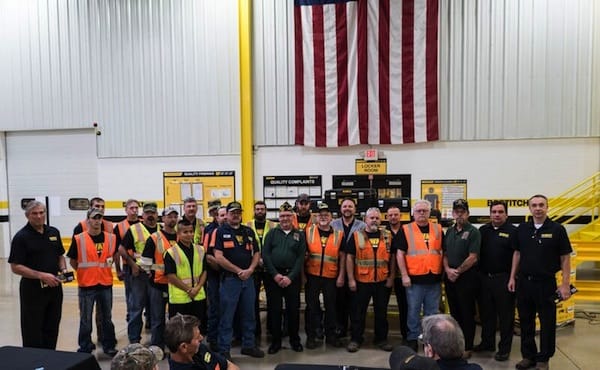By Steffan Busch, Talent Acquisition Coach & Executive Recruiter
You know you need people to grow your business. Everyone knows that.
But hiring the right people for your open jobs requires a robust talent acquisition program. And not everyone knows that! If your talent acquisition program consists of posting jobs to Indeed for free and offering an employee referral bonus of a couple hundred dollars, you’re on the wrong end of the bell curve. A proper talent acquisition program is more than posting a free, bland job description on Indeed and praying for applicants. Moving your company to the right end of the bell curve requires an investment of time and money.
If you don’t like the idea of investing financial resources into talent acquisition, I hate to break it to you, but there’s already a financial cost.

Consider the cost of being understaffed. Let’s look at plumbing and electrical service. Assuming a plumbing/electrical service technician is running three calls/day with an 85% conversion rate and an average ticket of $825, that comes out to $2,104 per day and $504,900 annually in missed potential revenue. And that’s for one service technician! Now let’s look at the cost of a single unfilled comfort advisor position. Three calls per day with a 50% conversion rate and $9,000 average ticket comes out to $13,500 per day. That’s $3,240,000 annually in missed potential revenue!
Now let’s consider the cost of losing people – the cost of turnover. Think about the cost of hiring the person who just left. Consider the cost of posting to job boards. Then add up pre-employment testing, interviewing time, drug test/background checks, and the time and administrative costs for onboarding the person who left. Think about their salary. Add up the base pay times the length of time they were on the job. Add bonuses/commissions, including sign-on bonuses. And don’t forget the cost of their health insurance, 401k, PTO, etc.
Now consider the cost of maintaining that person in the same job. What’s the cost of purchasing and maintaining uniforms, vehicles, tools, iPads, computers? How much did you invest in training them? Add that all up and you’ll come to a number that’s somewhere between six and fifteen times that person’s salary!
When it comes to hiring, your goal is to hire and retain as many high-performers as possible for your open roles. It’s critical to get it right the first time – you don’t want to have to keep going back to the drawing board. An intentional and fully developed talent acquisition program consists of the following components:
- Employer Value Proposition – What sets your company apart from the competition? Why should a high-performing HVAC installer leave their current company to work with you?
- Strategy – How are you going to broadcast your value proposition to the community?
- Process – Do you have a clearly defined, intentional, and effective hiring process? What’s your onboarding like?
- Metrics – Do you understand which metrics you need to track for effective talent acquisition?
- Compliance – Are you following established labor laws?
Honestly, this is a lot to consider. Who in your organization is going to manage all this and ensure it happens? How will they know what the best recruitment practices are? Do you have an in-house recruiter? Is it time to hire one?
I mentioned that being successful at talent acquisition requires an investment of time and money. But what exactly does that mean?

Let’s start with the time investment part. If you don’t have a recruiter, each member of your leadership team should spend a defined amount of time focusing on recruitment-related activities. These could be action items such as refreshing ads on job boards, screening applications, and networking for contacts. Be intentional with it. Perhaps dedicate five hours a week to it and adjust according to your hiring needs. A time investment in talent acquisition also includes properly vetting candidates.
If you already have a recruiter, provide them with opportunities to upskill by having them attend workshops, which allow them to learn and network with other recruiters. Every job requires a level of training; recruiting is no different.
Now let’s talk about the money investment for talent acquisition. This might mean investing in tools (such as applicant tracking systems) to help you effectively recruit. But what else?
Well, a common question I get is “What percentage of our budget should we dedicate to recruiting?” The answer is generally “No more than one percent of your budget, unless you’re planning to use more expensive media channels to get the word out, such as TV, radio or billboards.” Budgeted talent acquisition money should be put towards digital marketing, social media tactics, and sponsoring job ads on job boards. You’ll also want to invest in a robust employee referral program, if you truly want to hire great people quickly and you want them to stay. Tailor your referral program to reward employees for referring excellent and reliable candidates. And finally, if you don’t have a recruiter, it may be time to hire one or use outside recruiting agencies to help you reach your hiring goals.
Getting the right people in the right seat in a timely fashion is no small undertaking. You need people to grow your business, and that means investing in talent acquisition. I encourage you to consider the return on your investment! One percent of your budget is miniscule compared to the cost of being understaffed and the cost of employee turnover. An investment in talent acquisition is an investment well worth making.
 Steffan Busch’s career in human resources and recruiting has spanned more than 14 years. He loves consulting with leaders on how to best position their companies so they can become employers of choice, which helps their recruitment of the best and brightest job candidates in the industry. In his role as Talent Acquisition Coach and Executive Recruiter at Nexstar Network, Steffan has been instrumental in launching NexHire, a tailored solution to help contractors improve their recruitment marketing, streamline their process, and identify professionals who are the right fit for their culture and their business for the long term.
Steffan Busch’s career in human resources and recruiting has spanned more than 14 years. He loves consulting with leaders on how to best position their companies so they can become employers of choice, which helps their recruitment of the best and brightest job candidates in the industry. In his role as Talent Acquisition Coach and Executive Recruiter at Nexstar Network, Steffan has been instrumental in launching NexHire, a tailored solution to help contractors improve their recruitment marketing, streamline their process, and identify professionals who are the right fit for their culture and their business for the long term.




Join the conversation: